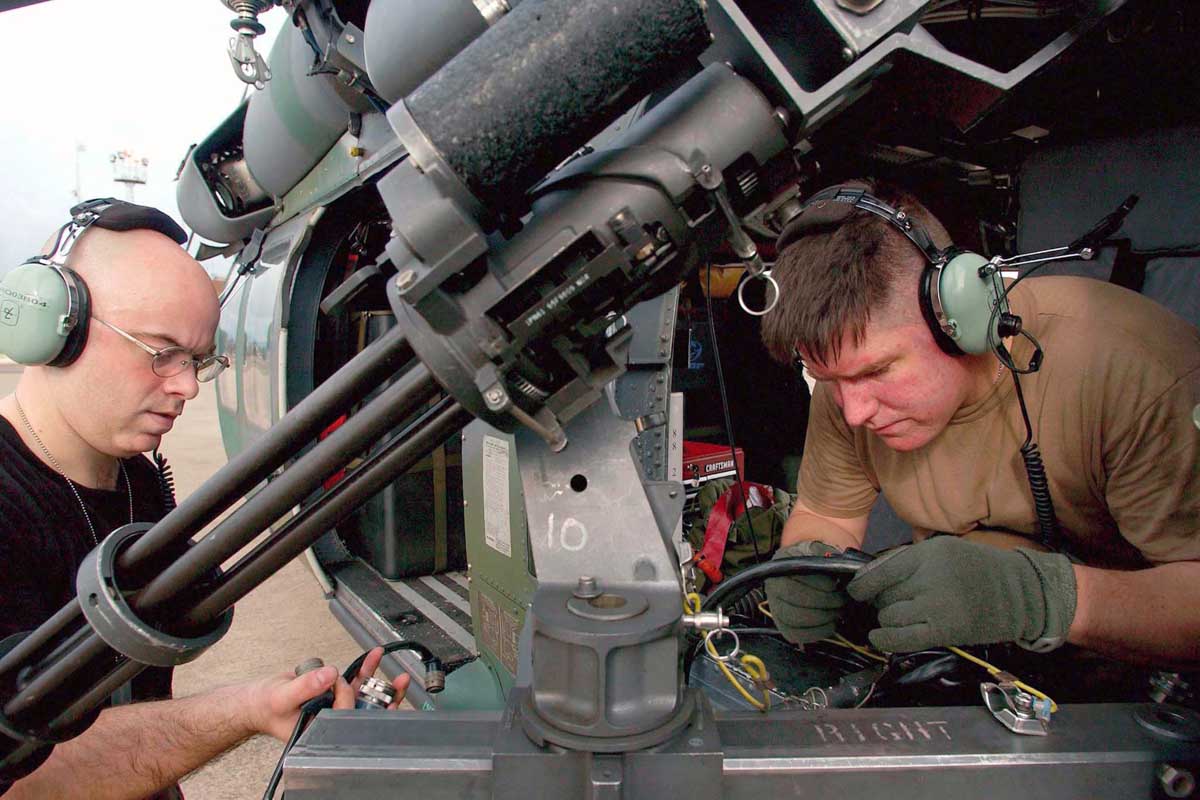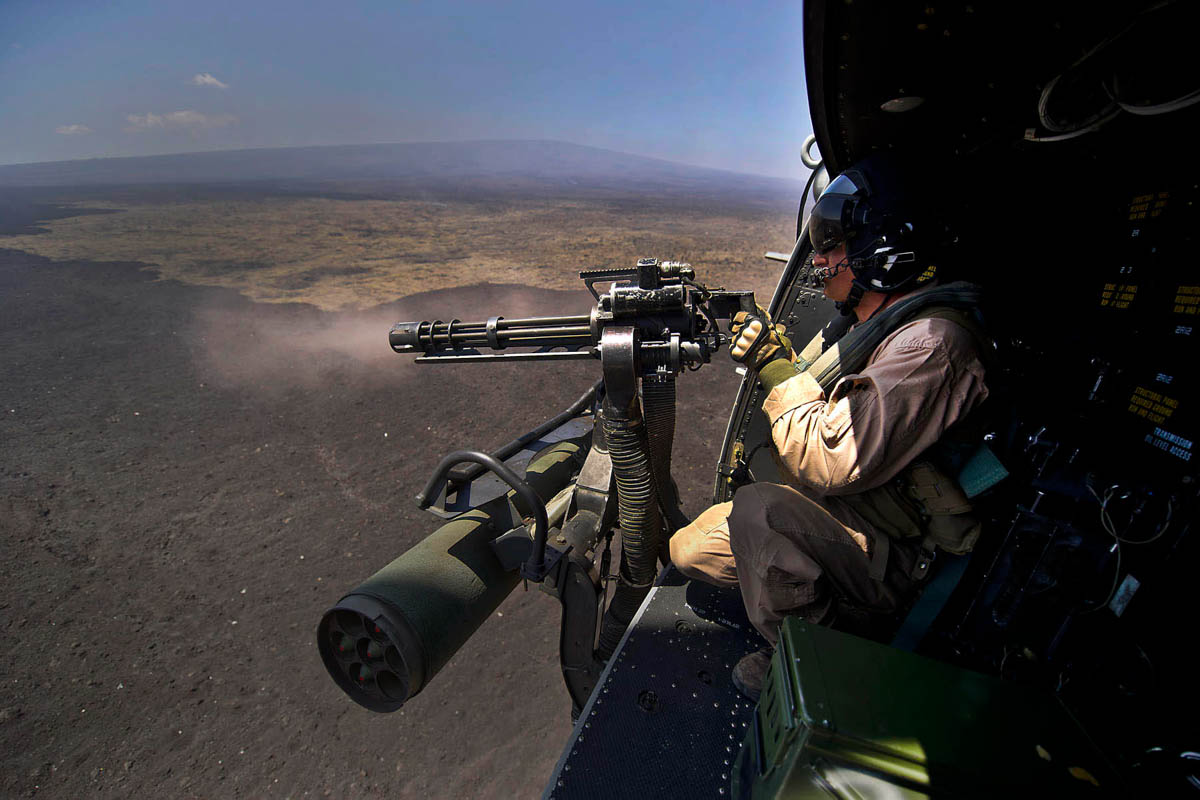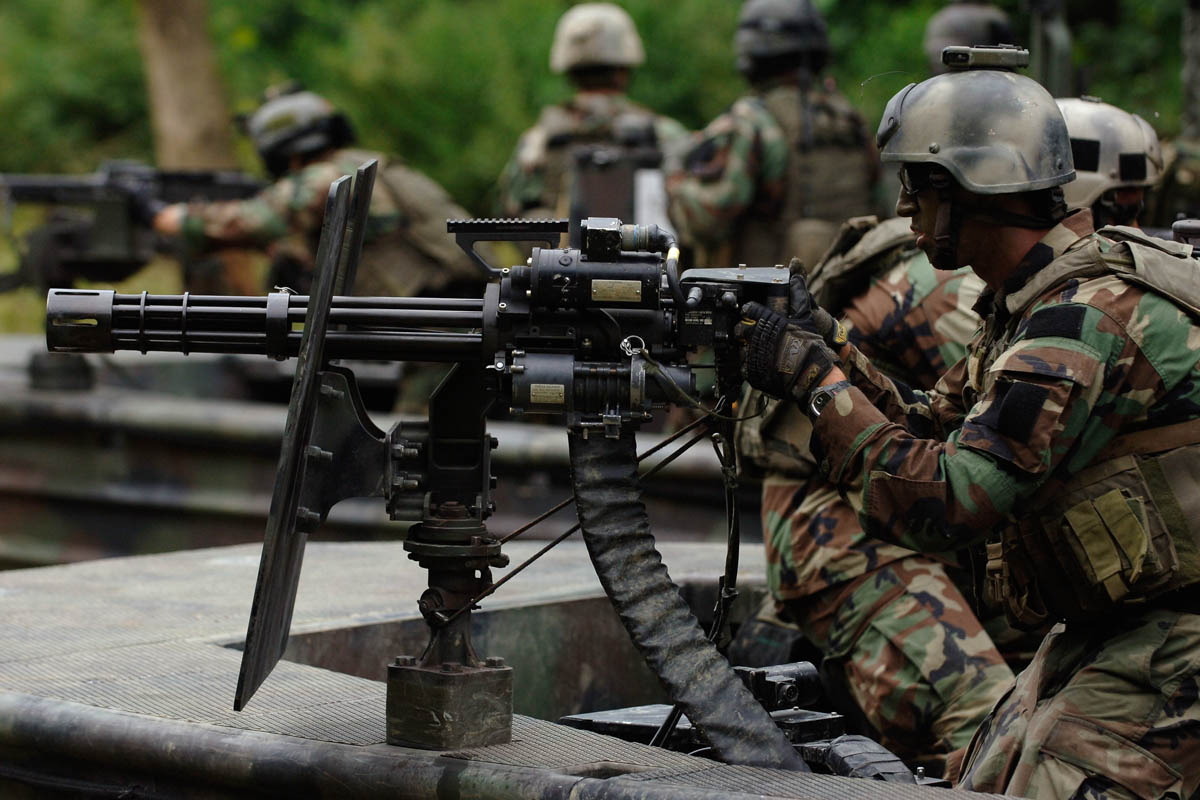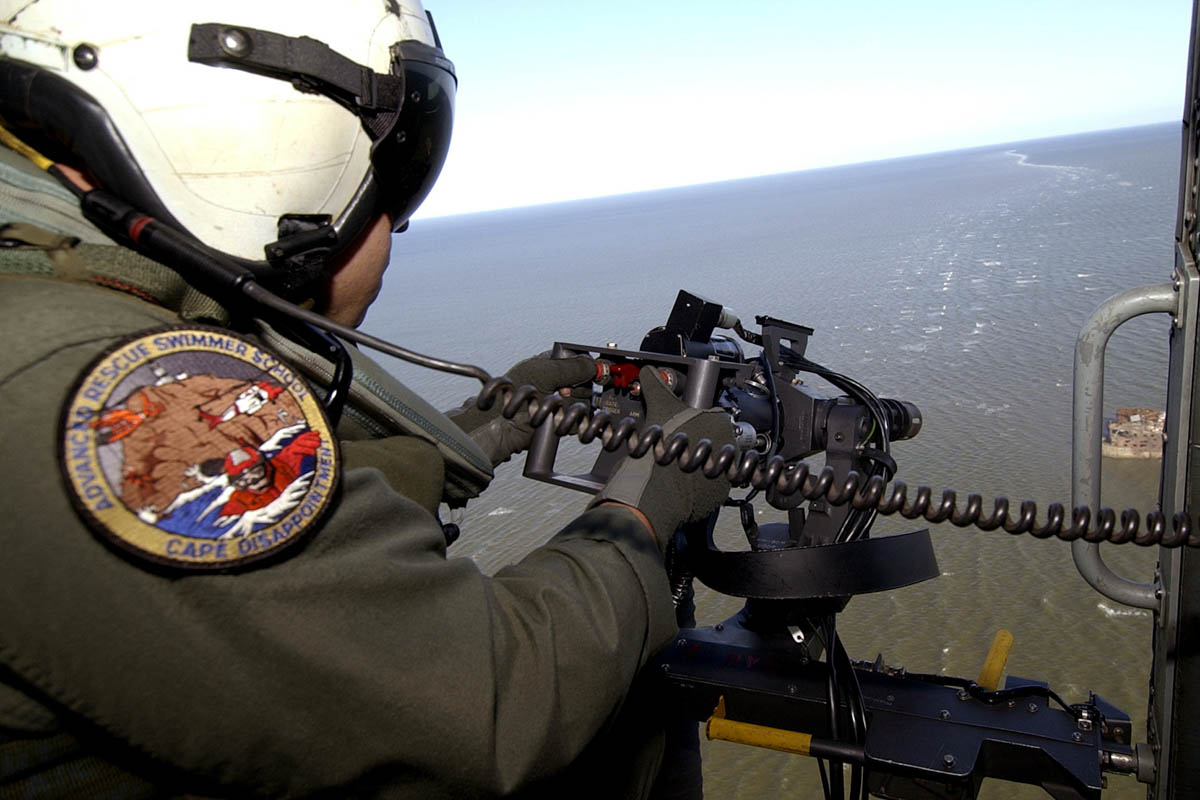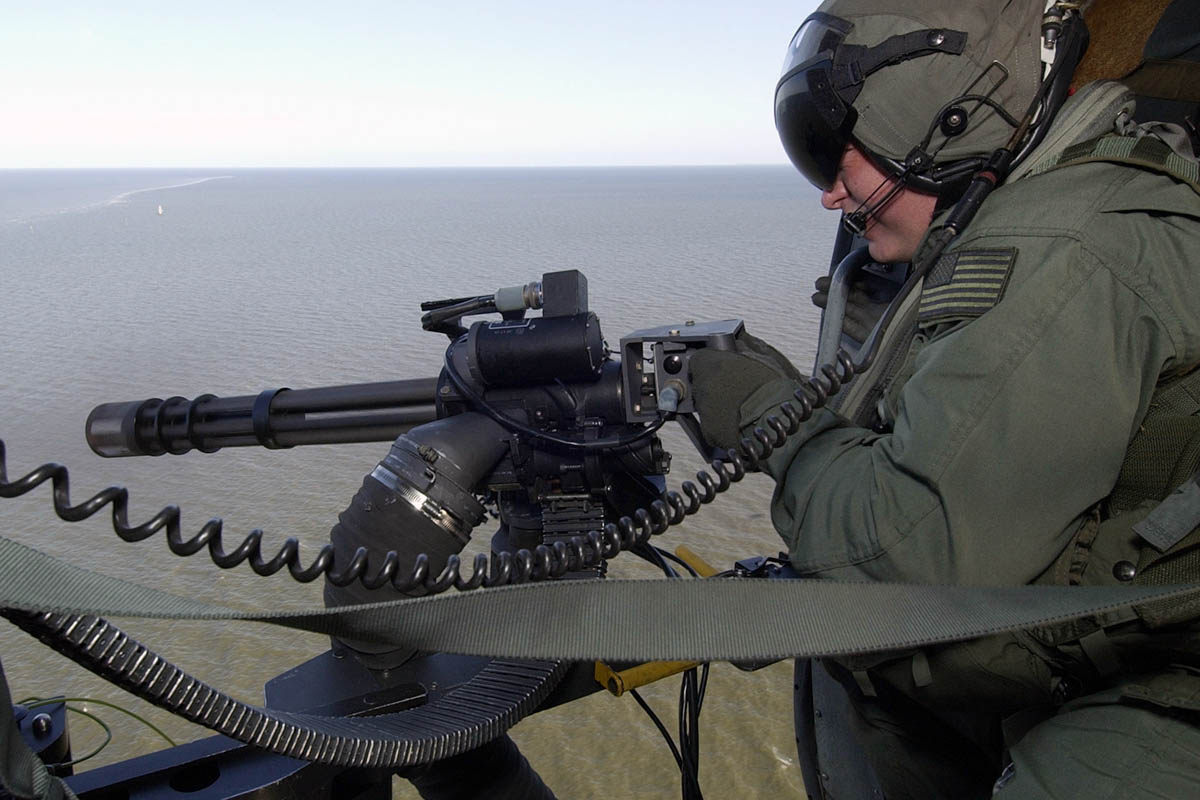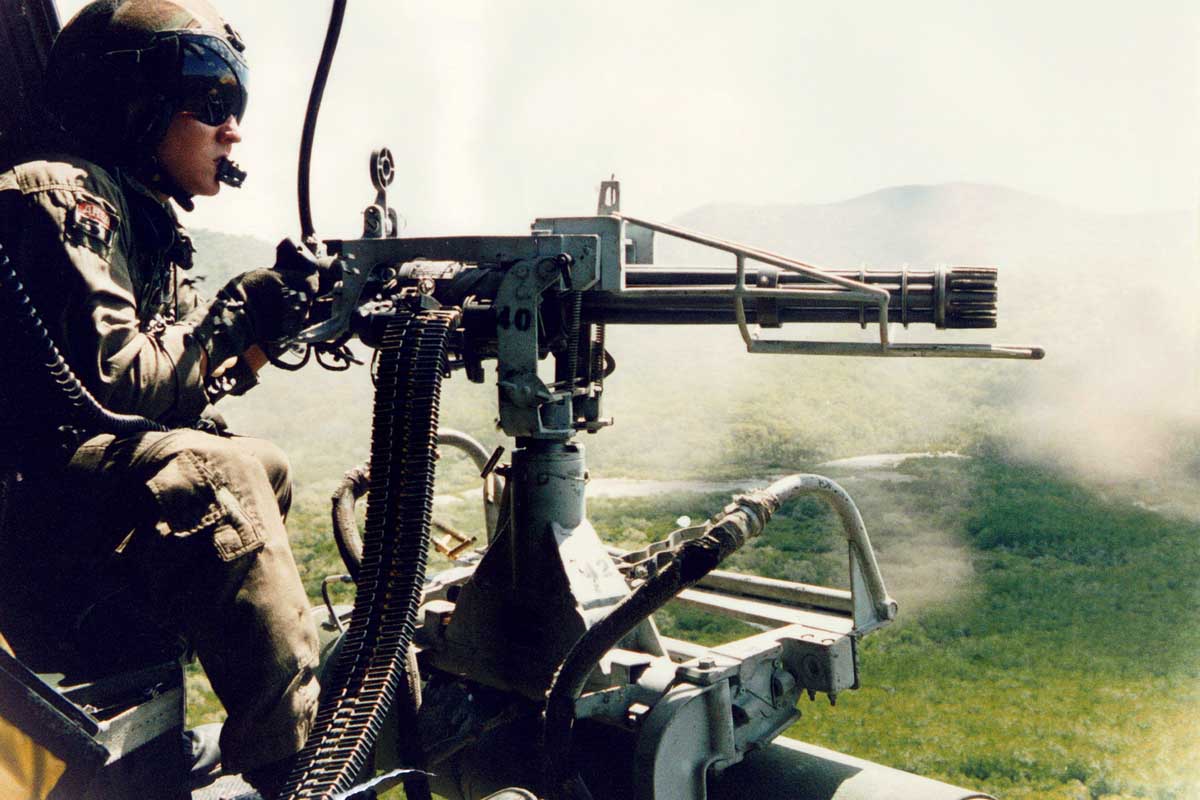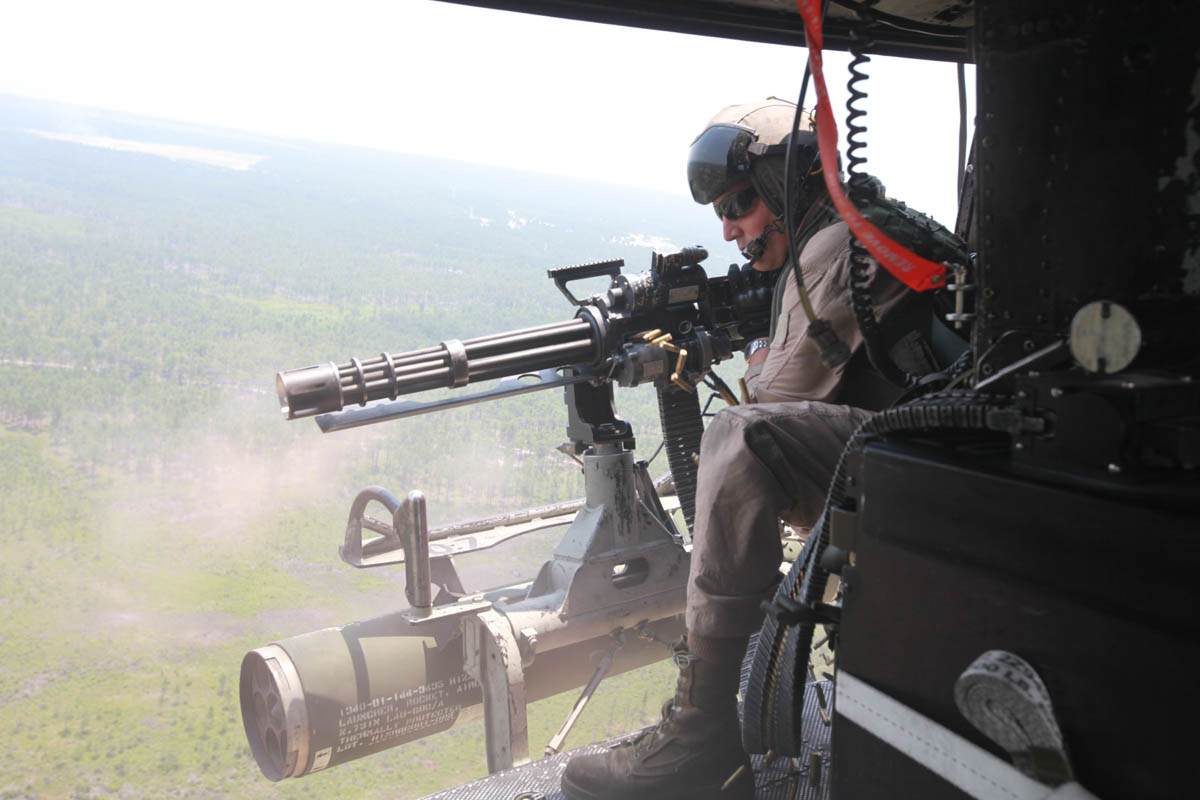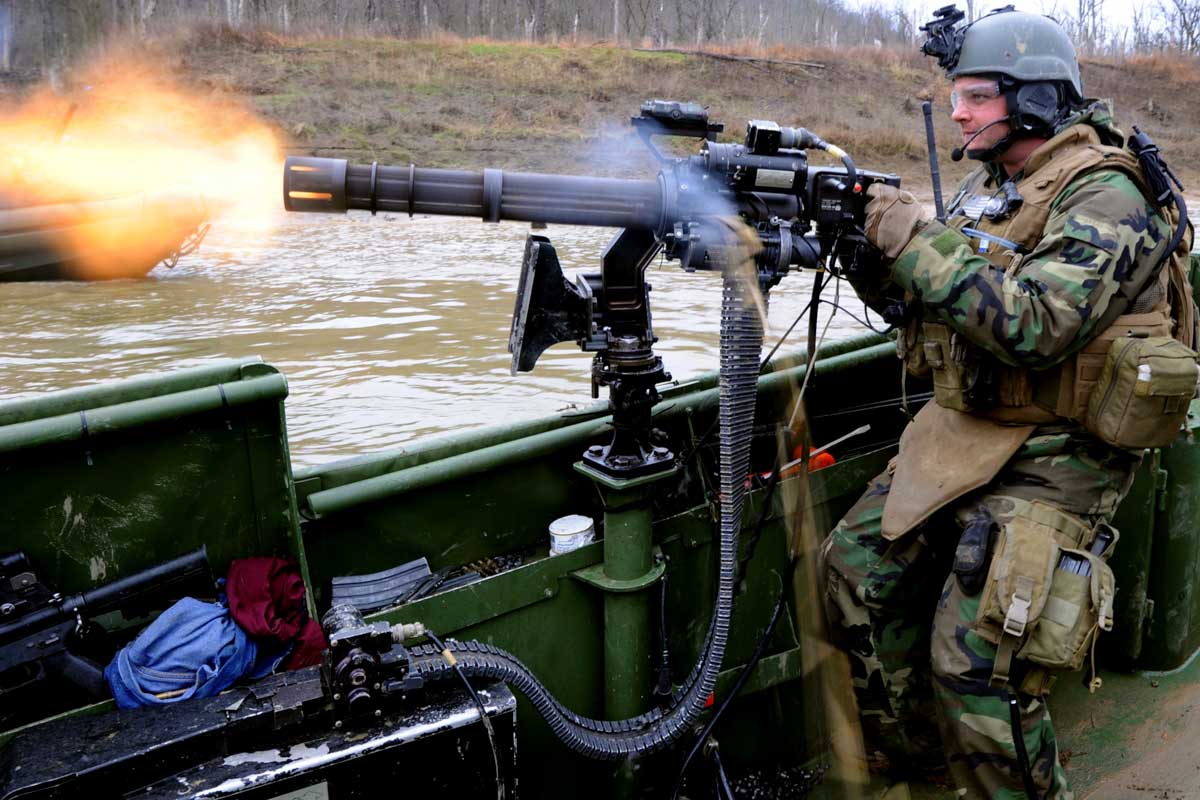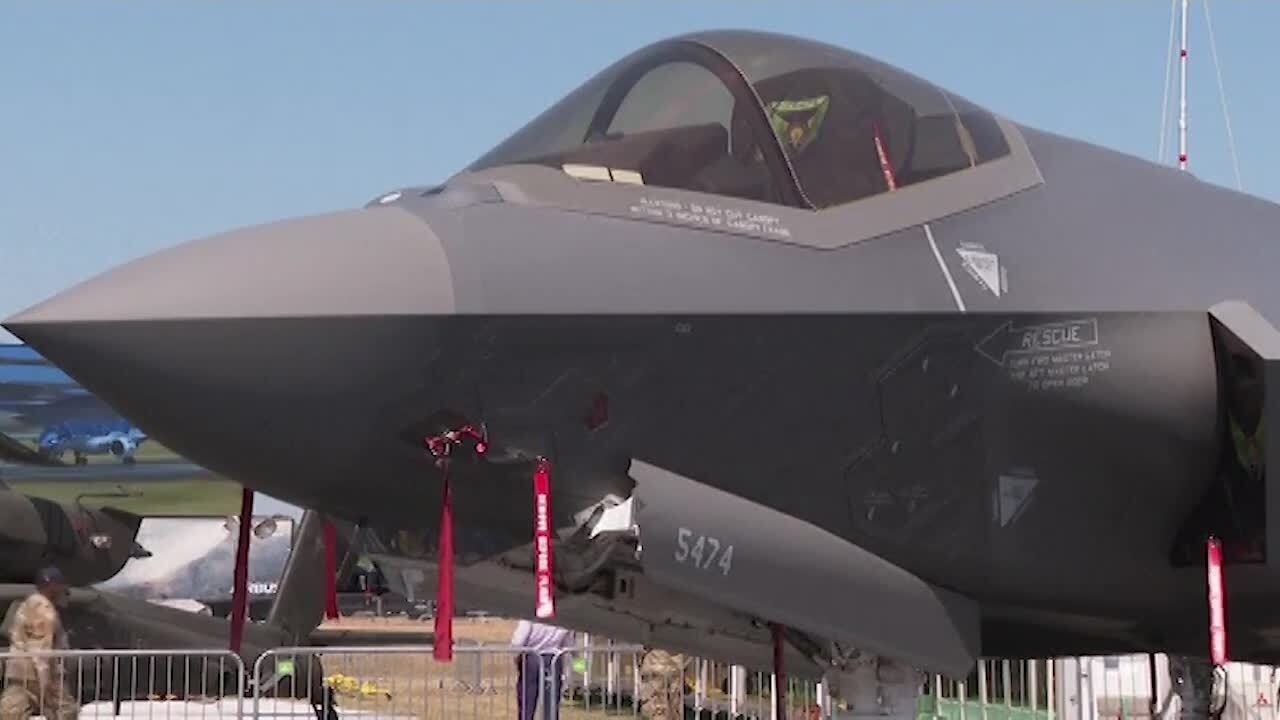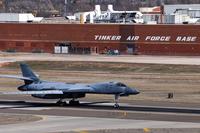Manufacturer: General Electric
Service: USN, USAF, US Army
Weight: 85 lbs
Length: 29.5 in
Barrel length: 22 in
Caliber: 7.62×51mm NATO
Action: Electrically driven rotary breech
Rate of fire: 2,000–6,000 rpm
Muzzle velocity: 2,800 ft/sec (853 m/s)
Maximum range: 1,093 yd
The M134 GAU-17 “Vulcan” cannon is a six-barreled, air cooled, medium machine gun used primarily as a fire suppression weapon in aircraft for the U.S. military. The so-called “Gatling” design relies on electric motors to power the barrels resulting in a firing rate as much as 6,000 rounds per minute. It is used in a variety of rotor wing aircraft in the “door gunner” position and is used by the U.S. Navy for its riverine craft and special operations watercraft.
Soon after the end of the Second World War the newly formed United States Air Force identified a need for an improved gun system for its aircraft. While adequate as an air combat / ground attack weapon during World War Two, the Browning M2 .50 caliber machine gun had been rendered obsolete by jet aircraft and needed to be replaced by a weapon with increased range, rate of fire, and projectile lethality.
Related Video:
Realizing that singled barreled automatic weapons had essentially reached their design limits, the U.S. Army Ordnance Research and Development Service hit on the idea of re-introducing the multi-barreled rotary weapon invented by Richard J. Gatling in the 1880s. Initial tests proved promising as a vintage Gatling gun, now powered by an electric motor in place of the usual hand crank, was able to achieve rates of fire in excess of 4,000 rounds per minute.
In 1946 the General Electric company received the contract for this new program, code named "Project Vulcan," and was tasked with producing functional prototypes in a number of calibers for further testing. In 1952 GE produced three different guns; .60 caliber, 20mm, and 27mm. After extensive testing, the 20mm version was selected for further testing to determine its suitability as an aircraft mounted weapon. In 1956 the gun was standardized as the M61 20mm cannon and entered service with both the United States Army and Air Force.
With the introduction of helicopters to the modern battlefield, the M61 system was redesigned and scaled down for use as a helicopter weapon system. Designated the M134, this new weapon was similar to the M61A1 but it fired the much smaller 7.62mm percussion primed rifle cartridge. Capable of firing 6,000 rounds per minute, the M134 was used on a number of helicopters, such as the UH-1 Iroquois, OH-6 Cayuse, and AH-1 Cobra, as well as the AC-47 gunship, during the Vietnam War.
In these cases the M134 was part of an armament system and fired by either the pilot or co-pilot. The M134 also saw service in the Vietnam War in a number of under wing pods, allowing aircraft such as the AD-1 Sky Raider to deliver tremendous amounts of firepower in CAS missions.
The crew served version of the M134 is the GAU-17. Fired from a pintle mount on the helicopter fuselage, the GAU-17 is very similar to the M134 except that it is equipped with a ""high"" (4,000 rpm) and "low" (2,000 rpm) selector switch. The GAU-17 is currently in service on the UH-1N, H-3, and H-60 helicopters, as well as a number of American Special Operations aircraft, helicopters and boats.
Related Video
U.S. Marine Corps UH-1Y Venoms and AH-1Z Cobras conduct Aerial Gunnery Range.

